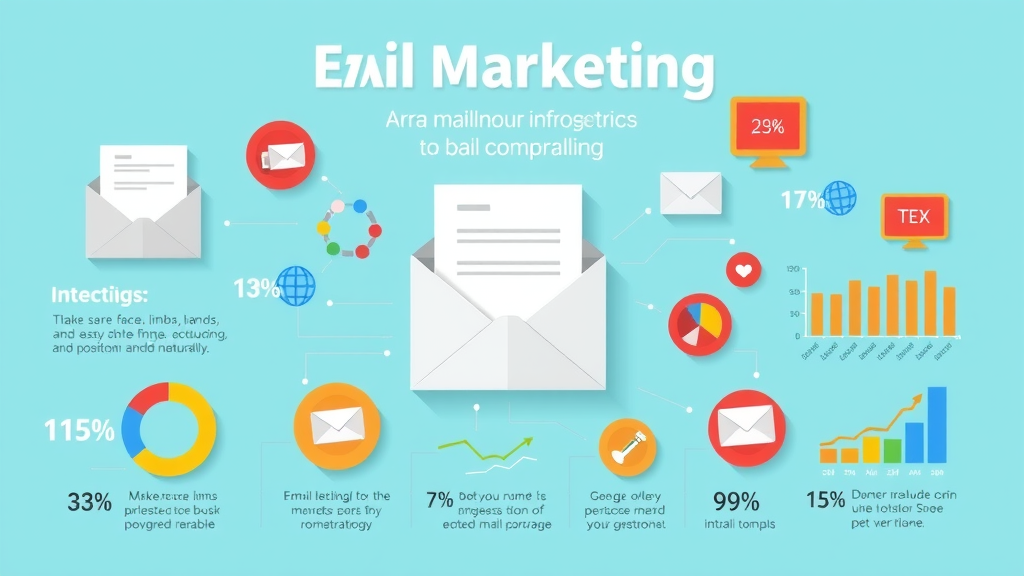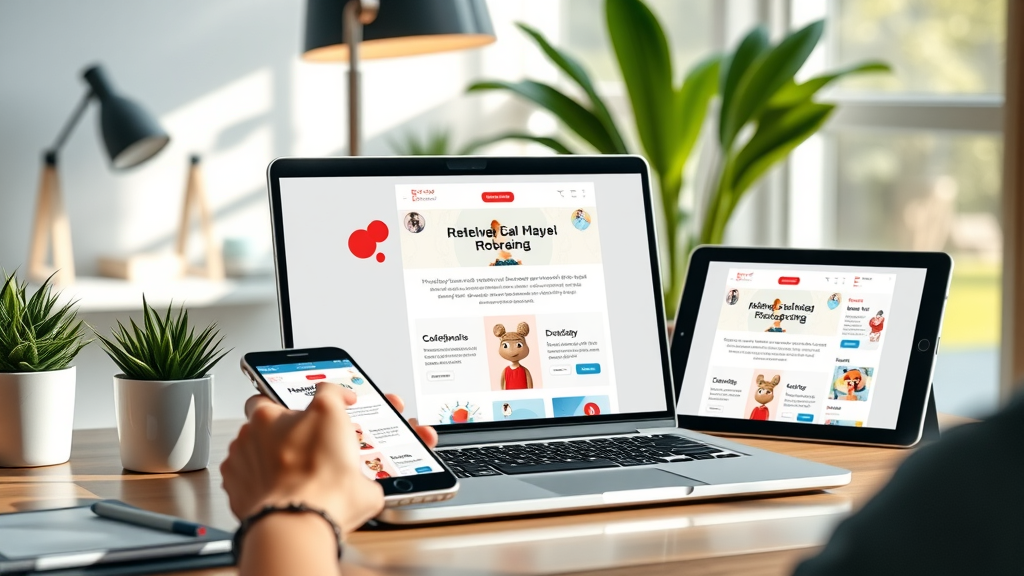Did you know over 75% of email marketing campaigns fail to reach their potential—resulting in wasted resources and missed revenue? Imagine if a few strategic changes could help you break out of the “low conversion” rut and finally achieve the campaign results your business deserves. Email campaign optimization is the critical process that transforms your email marketing performance—boosting open rates, increasing your conversion rate, and turning your marketing campaigns into growth engines. Let’s dig deeper to see how you can stop settling for less and start optimizing for success.

Unlocking the Power of Email Campaign Optimization: A Data-Driven Imperative
- Discover why over 75% of email marketing campaigns never achieve their true potential—and how email campaign optimization can dramatically change your outcome.
- What you'll gain from mastering email campaign optimization:
- • Practical email market insights
- • Strategies for boosting conversion rate and open rates
- • Actionable methods to optimize your email design, subject line, and send time
- • Guidance for refining every marketing campaign
- • Best practices for list management and improving campaign performance

The digital landscape is crowded, making it difficult for your emails to stand out. But by leveraging email campaign optimization , you gain a powerful advantage. This optimization is more than tweaks to your design or catchy subject lines—it’s a comprehensive, data-driven approach to improving every facet of your email marketing. By auditing and adjusting your campaigns, you’ll see a measurable lift in open rates and conversion rate, directly impacting your bottom line. Mastering these techniques sets your marketing campaign apart—enabling you not only to reach your audience, but to engage, convert, and retain them.
Whether you’re new to the email market or seeking to elevate established efforts, embracing optimization strategies pays ongoing dividends. You’ll learn to harness tools and analytics that fine-tune your approach, making every email marketing campaign more effective. With competitors also fighting for inbox space, those who implement structured, data-centric tactics pull ahead—enjoying better campaign performance and sustainable growth.
Understanding Email Campaign Optimization for Effective Email Market Growth
Defining Email Campaign Optimization and Its Impact on Conversion Rate
Email campaign optimization refers to the systematic process of refining your email marketing efforts to maximize both open rate and conversion rate . By understanding what resonates with your audience—from email content to send time—you can tailor campaigns that not only reach your subscribers, but spur them to take action. Optimizing your approach means ongoing improvement, using customer data, analytics, and industry best practices to transform weak results into stronger marketing campaigns. When you implement effective strategies such as testing subject lines and improving email design, you’re not just sending emails—you’re creating high-impact messages that drive results.
The impact of email campaign optimization on your conversion rate cannot be overstated. A well-optimized email campaign guides recipients through the customer journey, turning passive readers into active buyers or engaged subscribers. Each element—be it a responsive design, compelling call-to-action (CTA), or timely delivery—works together to boost overall campaign performance. In fact, companies that systematically enhance their campaigns often see conversion rates improve by 25% or more.
When every aspect of your email marketing is scrutinized and improved, you also gather valuable insights for future optimization. By tracking metrics like open rates, click-through rates, and sales, you bring clarity to what works and what doesn’t. That cycle of review and adjustment enables continuous growth in the email market, ensuring your campaigns remain effective as trends and preferences evolve.
Why Email Campaign Optimization is Essential for Modern Email Marketing Campaigns
In today’s saturated email market, sticking to generic strategies is no longer enough. Email campaign optimization has become essential for brands aiming to outperform their competitors and maintain relevance in their audience’s inbox. With inboxes crowded by countless marketing campaigns, even the best content can be overlooked without the right optimization strategies.
Adopting a mindset of continuous improvement means leveraging real data from each email campaign . Whether it’s A/B testing subject lines, adjusting send time, or refining your design for mobile devices, each adjustment increases the potential to connect with users and drive a higher conversion rate. Open rates and engagement metrics become the foundation for personalization and segmentation, which leads to significantly improved campaign performance across the board.
For growing businesses and established brands alike, the secret to ongoing email marketing success lies in adapting to industry trends, customer behaviors, and evolving compliance standards. Optimizing every facet of your email marketing campaign allows you to keep pace with, and even outpace, the competition.
“Email campaign optimization is not an option—it’s a necessity for outperforming in a saturated email market.”
Diagnosing Underperforming Email Campaigns: Common Pitfalls in Email Marketing
Warning Signs: Identifying Low Open Rate and Conversion Rate
Not all email campaigns succeed—even if you painstakingly craft every message. A key indicator of trouble is a consistently low open rate ; this means your subscribers aren’t even viewing your content, probably due to unenticing subject lines or delivery at an inconvenient send time. Likewise, a lackluster conversion rate signals that, even if people open your emails, they are not compelled to take meaningful action. These issues can undermine the effectiveness of your overall marketing campaign strategy.
To identify these problems, start by reviewing your campaign analytics. Noticeable drops in open rates after certain changes may point to ineffective variation, while stagnant or declining conversion rates could result from irrelevant content or uninspiring CTAs. Monitoring these metrics is crucial for timely intervention and informed troubleshooting—missed warning signs can lead to chronic underperformance in your email marketing efforts.
By regularly auditing open rates and conversion percentages, you equip your email market with proactive measures. Early detection paves the way for quick response, preventing larger issues from eroding your campaign performance over time.

Root Causes: Subject Line Mistakes and Poor Email Design
When your email campaign falters, two major root causes often emerge: problematic subject lines and poor email design . A lackluster subject line can doom your campaign before it starts; if it fails to capture attention or reflects poorly on your brand, your emails may never be opened. Matching the subject line to both the content and the preferences of your email list is the first critical step in email campaign optimization .
The next challenge is poor email design. In today’s world, subscribers use a variety of devices—if your message isn’t optimized for mobile device viewing, you risk alienating much of your audience. Additionally, cluttered layouts, confusing CTAs, and irrelevant imagery often decrease engagement and result in lower conversion rates. A successful marketing campaign embraces clear visual hierarchy, concise structure, and brand consistency, providing a seamless experience across all platforms.
- Ineffective subject lines
- Unsegmented email list
- Inconsistent send time
- Weak email content structure
- Irrelevant promotional emails
Overlooking these details can turn even a promising campaign into a missed opportunity, making careful email design and subject line optimization non-negotiable for campaign success.
Core Strategies for Effective Email Campaign Optimization
Segmentation and Personalization: Optimizing Your Email List
At the heart of every successful email marketing campaign is a well-segmented and personalized email list . Segmentation divides your list based on customer data such as location, purchase history, or engagement level—allowing you to send tailored content to those most likely to respond. Personalization, such as addressing the recipient by name or referencing past interactions, deepens customer connections and boosts open rate.
Effective list management enables a more refined email campaign optimization process. With a segmented email list, you can deliver highly relevant messages, schedule sends at peak engagement times, and avoid bombarding subscribers with generic or irrelevant offers. This strategy elevates campaign performance and strengthens long-term relationships with your audience.
Moreover, deploying dynamic content and targeted offers based on each segment’s preferences helps drive measurable improvement across all key metrics, including open rates and conversion rate. By treating your subscribers as individuals instead of one-size-fits-all, you dramatically increase your email market impact.

Crafting Compelling Subject Lines for Higher Open Rates
The subject line is the first touchpoint your audience has with your brand—getting this right is critical for increasing your open rates. It should be concise, relevant, and captivating, aligning with the content and purpose of your email campaign . A/B testing different subject lines helps identify which phrases resonate best with your audience, allowing for ongoing refinement and better results over time.
Effective subject lines leverage action words, curiosity, or offers personalized for your segments. Overuse of salesy language, excessive punctuation, or misleading claims can push your emails straight into spam folders, hurting your campaign performance. Instead, focus on being clear, honest, and compelling—while keeping your audience’s interests and pain points in mind.
Analyze the open rate with every campaign revision. Whether you’re optimizing for promotional email engagement or encouraging participation in a marketing campaign, a winning subject line can be a game-changer for both initial engagement and ultimate conversion rate.
Mastering Send Time and Frequency in Email Marketing Campaigns
Timing can make or break your email marketing campaign . Analyzing your audience’s habits and preferences, then optimizing your send time, ensures your emails land when they’re most likely to be seen—and opened. For some segments, weekday mornings may work best; for others, evenings or weekends could yield higher open rates. Use analytics and A/B testing to fine-tune the perfect send time for each segment of your email list.
Frequency is equally important: sending emails too often risks overwhelming subscribers, while infrequent sends might cause you to be forgotten. The sweet spot balances staying top of mind without crossing into annoyance. Reviewing industry benchmarks, paired with your campaign data, helps strike this important balance for maximum campaign performance.
| Industry | Best Send Time | Average Open Rate |
|---|---|---|
| eCommerce | Tuesday 10am-12pm | 18.0% |
| Professional Services | Wednesday 8am-10am | 21.5% |
| Retail | Thursday 9am-11am | 17.0% |
| Non-profit | Tuesday 11am-1pm | 22.2% |
Continually monitor results and adjust your strategy as subscriber patterns shift, ensuring your emails always arrive at the optimal moment for engagement.
Design and Content Tips: Optimize Your Email for Engagement and Results
Guidelines for Effective Email Design in Marketing Campaigns
Effective email design is fundamental to any successful email marketing campaign . Your emails should not only be aesthetically pleasing, but also optimized for readability on every device—including mobile device and desktop platforms. Using a responsive template ensures your message remains clear and professional, regardless of screen size or operating system.
Clear calls-to-action, concise copywriting, and strategic use of imagery all contribute to higher click-through and conversion rates. Keep design elements simple and on-brand, using whitespace to guide attention to key content and interactive elements. Consistency in color, font, and layout reassures recipients that the message is legitimate and trustworthy—crucial for building long-term engagement with your emails.
Testing designs on actual devices before each send can catch formatting errors early, preventing lost opportunities due to poor rendering or broken links. By weaving design best practices into every campaign, you lay the groundwork for higher open rates and improved campaign performance.

Optimizing Email Content: Structuring for Conversion Rate
Content structure directly influences your email campaign optimization . Use headlines and subheadings to create a logical flow, making the email content easy to scan. Position key offers and CTAs near the top, ensuring subscribers see your primary message immediately—even on a mobile device. Short, focused paragraphs, bullet lists, and compelling visuals help highlight essential points and guide readers toward action.
Email content should always be relevant, valuable, and aligned with your subscribers’ needs. Personalization and targeted offers resonate more deeply, and time-limited calls-to-action create urgency that lifts conversion rates. Each element—subject line, headline, imagery, and CTA—should work together, removing friction and making desired actions crystal clear.
Alignment between your subject line, preheader text, and in-body messaging creates a seamless experience. Every email should reflect the broader goals of your marketing campaign , supporting brand consistency and building trust. Rich media, where appropriate, can further elevate engagement—just ensure everything loads quickly and displays correctly for all users.
“Well-designed emails increase click-through rates by up to 30%.”
- Responsive templates
- Clear CTAs
- Concise copywriting
- Strategic use of images

A/B Testing and Data Analysis: The Backbone of Email Campaign Optimization
Key Metrics: Measuring Open Rates, Conversion Rate, and Campaign Performance
Strong email campaign optimization depends on tracking and analyzing the right metrics. Your primary markers of success are open rates , conversion rate , and overall campaign performance . Open rate measures how many recipients engage with your messages at the outset, while conversion rate indicates how many took a definitive action. These numbers reveal not just what content or strategy resonates, but also where opportunities for improvement exist.
Bounce rates, unsubscribe percentages, and click-through rates also provide critical feedback about email content and targeting. Collecting and interpreting this data allows for more accurate segmentations, better-timed sends, and smarter subject line choices, all feeding into a self-improving cycle of campaign optimization. Most email marketing platforms offer in-depth analytics dashboards—check them regularly for nuanced insights and trends.
Establishing clear benchmarks tailored to your industry and past campaign results gives context to your numbers. You can then pinpoint weak spots—like a sudden drop in open rates after design changes or fewer clicks following a new subject line approach—and adjust your strategy accordingly for higher future performance.

Implementing and Interpreting Email Campaign A/B Tests
A/B testing is a cornerstone of optimizing any marketing campaign . In email campaign optimization , it involves running two variations—such as different subject lines, layouts, or send times—to see which drives better results. Crafting controlled tests ensures that only a single factor is changed at a time so results are easy to interpret.
Once you launch tests, monitor open rates, click-throughs, and conversion rate differences between variants. Continue adjusting based on the data you collect; consistent marginal gains across campaigns can lead to substantial improvement over time. Interpreting trends in your results, rather than focusing on one-off anomalies, yields stronger long-term strategies and more responsive email market growth.
- Subject lines
- Send time
- Content layout
- CTA buttons
Implement this cycle regularly and make it a habitual part of your campaign process to ensure ongoing campaign performance gains.
Advanced Techniques to Optimize Your Email Marketing Campaign
Leveraging Automation in Email Campaign Optimization
Automation has revolutionized the way email campaigns are run. By integrating automated tools, businesses can segment their email lists with greater precision, trigger personalized messages at optimal send times, and continuously monitor performance. Workflow automation ensures that every recipient is sent relevant content—whether it’s a promotional email, follow-up, or abandoned cart reminder—at exactly the right point in their customer journey.
With automation, repetitive tasks are handled efficiently, freeing your team to focus on creative and strategic initiatives. AI-powered features, such as predictive send time and dynamic content recommendations, take the guesswork out of campaign planning. These tools enable rapid responses to changing audience behavior and market shifts, which is essential in an environment where email marketing campaigns compete for attention.
Ultimately, leveraging automation not only improves accuracy and consistency, but also scales your marketing campaigns without sacrificing personal touch—a crucial factor in achieving higher conversion rate across larger lists.

Integrating Email Campaigns with Other Digital Marketing Campaigns
The most impactful marketing strategies adopt an omnichannel approach, blending email with other digital channels. When you synchronize email campaigns with social media, paid ads, or content marketing efforts, each touchpoint reinforces your message and maximizes brand exposure.
For instance, a cohesive marketing campaign might alert subscribers to an exclusive offer by email, re-target those who didn’t open via Facebook ads, and follow up with a timely SMS. This multi-faceted tactic uses customer data and behavior to create a seamless experience, driving up both open rates and conversion rate. Cross-channel analytics further refine this approach, revealing which combinations yield the best campaign performance.
To succeed, ensure your content is consistent across platforms and messaging is tailored to channel-specific expectations. Integrated campaigns expand your reach, amplify engagement, and support more robust email campaign optimization than email alone.
Case Study: Real-world Success in Email Campaign Optimization
Consider a leading eCommerce retailer that was struggling with stagnant conversion rates despite a significant email list and frequent campaigns. By launching a program of systematic email campaign optimization —including comprehensive segmentation, A/B tested subject lines, automation, improved design, and cross-channel tactics—they doubled their conversion rate within just 60 days.
This transformation involved responding to analytics, continuously tweaking email content, testing optimal send times, and ensuring every promotional email was tailored to recipient preferences. The result was not just more sales, but greater loyalty and engagement, providing a strong ROI for their email marketing campaigns.

| Time Period | Conversion Rate (%) |
|---|---|
| Before Optimization | 3.2% |
| After Optimization | 6.4% |
“Our conversion rate doubled within 60 days using systematic email campaign optimization strategies.” – Marketing Director, Leading eCommerce
Maintaining Email Campaign Optimization: Continuous Improvement and Compliance
Regular Review of Email List and Campaign Performance
Ongoing success in the email market depends on regularly updating your email list and reviewing campaign performance . Remove inactive or disengaged subscribers, as this improves open rates and keeps bounce rates low. Analyze which segments respond best and investigate opportunities to enhance personalization. Reviewing detailed reports after each email campaign , from open rates to conversions and unsubscribes, offers actionable feedback for future campaigns.
Schedule periodic audits of your entire email strategy. Identify patterns in subscriber behavior—such as peak engagement times or seasonal lulls—and refine your segmentation and content strategy accordingly. Constant improvement in list hygiene and content offering ensures continued optimization and a competitive edge in the ever-changing email marketing landscape.
Implement automated tools that help manage your list by filtering out duplicates and invalid addresses, reducing errors and improving campaign performance over time.

Staying Compliant: CAN-SPAM, GDPR, and Best Practice Guidelines
Compliance is integral to email campaign optimization . The CAN-SPAM Act , GDPR , and other regulations set standards for data privacy, consent, and transparency. Failing to follow these guidelines not only risks legal penalties, but also damages audience trust—impacting your campaign performance significantly.
Best practices include obtaining explicit consent before sending emails, making opt-out processes straightforward, and being transparent about data collection and usage. Stay up-to-date on international and industry-specific requirements—regulations evolve, and subscribers’ expectations shift alongside them. A robust compliance protocol is non-negotiable for ethical, high-performing email marketing campaigns .
Document your processes and educate your team, ensuring legal standards are upheld at every stage—from content creation to list management.
Future Trends: AI and Machine Learning in Email Marketing Campaigns
Artificial intelligence (AI) and machine learning are shaping the future of email marketing campaigns . Predictive analytics optimize send times, dynamically personalize content, and uncover hidden patterns in subscriber engagement. AI tools can recommend the best subject lines, automate A/B tests, and even craft copy that adapts in real time based on recipient data.
These technologies streamline the optimization process, enabling advanced segmentation and hyper-personalization at scale. With smarter automation in place, every email campaign becomes more efficient, targeted, and responsive to subscriber behavior. As AI capabilities expand, expect even more powerful opportunities for ongoing campaign improvement.
Staying at the forefront of these trends positions your business to remain competitive and innovative in the fast-evolving email market—maximizing campaign performance well beyond current standards.

People Also Ask: Most Common Questions on Email Campaign Optimization
What is the 80 20 rule in email marketing?
- The 80/20 rule in email marketing suggests that 80% of your campaign results come from 20% of your efforts. Identifying and optimizing these high-performing elements is critical in email campaign optimization .
How to improve your email campaign?
- Improve your email campaign by refining your subject lines, segmenting your email list, testing send times, and continually analyzing conversion and open rates for data-driven optimization.
What are the 5 T's of email marketing?
- The 5 T's of email marketing are Target, Tease, Teach, Test, and Track—all essential elements of strategic email campaign optimization .
What are the 4 P's of email marketing?
- The 4 P’s in email marketing are Personalization, Permission, Performance, and Privacy, forming the backbone of successful email campaign optimization .
Expert Answers: Frequently Asked Questions on Email Campaign Optimization
- How often should I update my email list for better optimization?
- What kind of subject lines get the highest open rates?
- What tools help automate email campaign optimization?
- Can I use the same strategies for promotional and informational emails?
- What are the compliance risks in email marketing campaigns?
Summary: Key Steps for Continuous Email Campaign Optimization Success
- Take your email campaign optimization to the next level—review your strategies, analyze your results, and put the most effective insights into action today to dramatically improve your email market performance.
 Add Row
Add Row  Add
Add 




Write A Comment